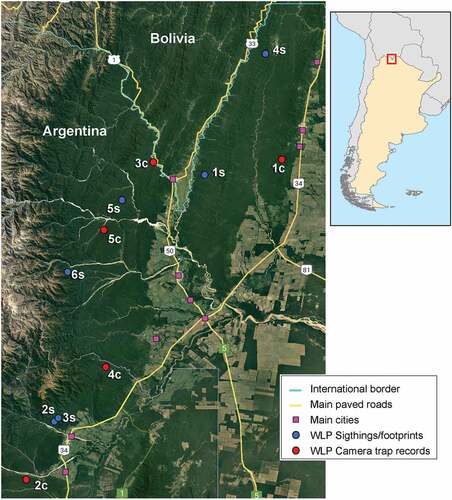Figures & data
Figure 1. Map of the study area with colored polygons denoting the regions sampled during camera trap surveys. Different shades of green are used to represent the Yungas ecoregion, National s and Provincial Protected Areas.

Figure 2. Study area map showing WLP reported camera trap records (red dots), sightings/footprints (blue dots). Labels on dots correspond to record identification. Map shows international borders (light blue lines), main paved roads (yellow lines) and main cities (purple squares).

Table 1. Camera trap surveys and white-lipped peccary (WLP) detected in Argentinean Yungas. Survey year and ID, number of sampling points (camera traps), sampling effort expressed as the sum of the number of nights that each camera trap was active, detection rate as WLP detections/1000 trap days and percentage of camera traps where WLP was detected in the site.
Table 2. White-lipped peccary opportunistic records in Argentinean Yungas. Record identification (Record ID), year, type of sign and observations.
